Aerating your garden and lawn is one of the most essential things that keep it thriving. It makes your plants lusher and healthier, providing a better garden ecosystem. Of course, utilizing the tools we already have is a great way to save money and time while making our plants develop. So, can a cultivator be used to aerate your plants? We're curious, too, and here's what we found.
Smaller areas in the garden can be effectively aerated using a cultivator. Rolling or digging it into the soil will leave deep indents, which will be the areas of growth for new plants and grasses. Cultivators can also aerate larger areas, but it's not easy, and you'll save more time if you use a dethatcher or an aerator attached to the back of a mower.
Making your garden thrive can be challenging, but knowing the right tools and their many uses can give you a headstart. Keep reading below to learn more about how to aerate your lawn or garden using various garden essentials.
How To Use a Cultivator as an Aerator
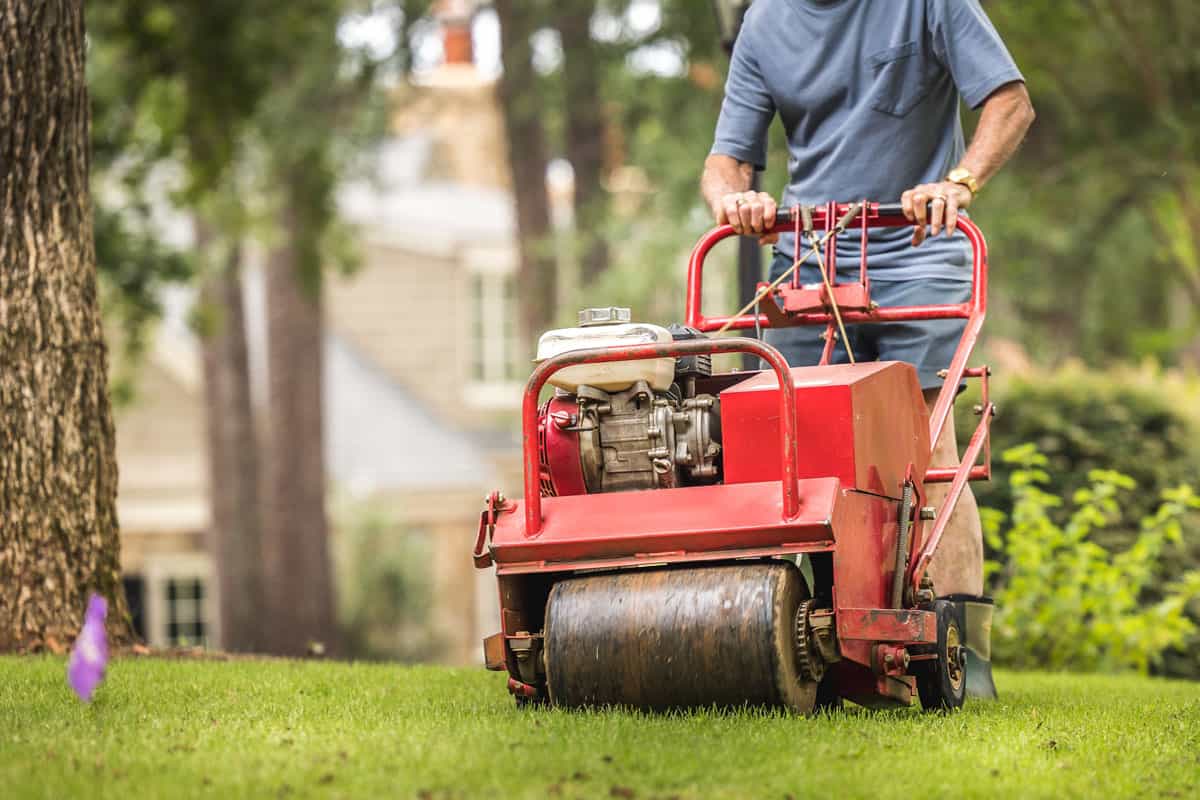
A cultivator has spikes that can penetrate deep into the soil, making it ideal for loosening and preparing plant beds and lawns. A rotary cultivator can be used to roll the spikes over the soil, but a normal garden tiller can usually do the trick.
Before aerating using a cultivator, make sure that the spikes are sturdy and clean. It should be able to remove plugs over the soil so nutrients can effectively penetrate the grassroots and make way for new and healthier growth.
How To Aerate The Lawn
Knowing how to aerate your lawn is essential if you want it to receive enough nutrients. A well-aerated lawn also requires less attention, so your lawn can look lush and green consistently throughout the year.
Remember that every time there is activity over the lawn, the soil gets compacted, and the leaves get "trapped," making them unable to receive adequate nutrients that keep them healthy. Here is how you can aerate your lawn:
Water the Lawn
Make sure the soil is moist and well-watered a day before aerating. A watered lawn is softer, making it easier for the aerator or cultivator to penetrate.
However, if there had been rainfall, there's no need to water the lawn again as it can create puddles.
Mow the Lawn
Mow the law using your aerating tool. Move over the lawn as many times as needed for the compact soil to become loose. Some create a checkboard pattern.
Apply Fertilize
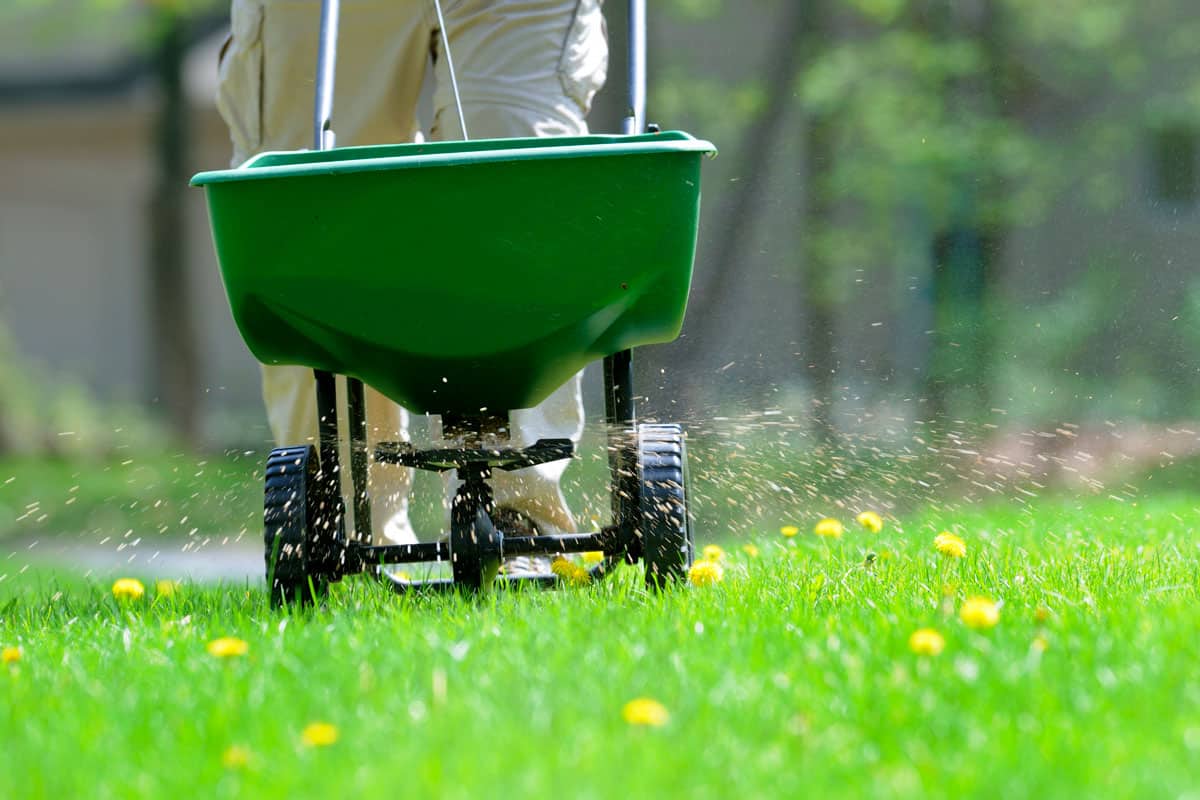
Applying organic materials such as compost and manure over your lawn will make it thrive better. Make sure to rake it into the aerated areas so it can penetrate grass roots.
Other Tools Used to Aerate the Lawn
Being ingenious when it comes to taking care of your garden will help you save time and energy, and it will make the work more time-efficient.
Technically, as long as you can pierce and soil the soil with it, it can be used as an aerator. The only factor that could affect which tool you would use is the length of space that needs to be aerated.
If you were aerating a large area, you would need to attach the aerator to a rolling or mechanical contraption so you wouldn't have to do it manually. However, small spaces could do with simple spiked tools.
Check out this Aerator on Amazon.
Shoe Spike Aerator
Shoe Spike aerators reefer to shoes that have spikes on the soles. Gardeners use it to lose the compact soil and aerate it as they walk around the area.
Although this sounds like an almost effortless way to aerate the lawn, it is not very effective. There isn't much control over the pressure you will need to exert, and often you might fall short since the force is only on the bottom of your feet.
Aside from this, most experienced gardeners say this is their least preferred method unless the soil is already a bit loose and the area is relatively small.
Check out this Spike Aerator on Amazon.
Tow-Behind Plug Aerator
A tow-behind aerator is an excellent solution for core aeration as it effectively loosens extremely compacted soil. It is best for larger lawns.
It can be expensive, but the investment is worth it, especially if you have a spacious landscape. This is also ideal if you've recently moved into a house whose lawn has been neglected and will be experiencing heavy activity.
Tow-behind plug aerators are great for core aerations. It doesn't destroy the yard but gives the grassroots access to nutrients, air, and water.
Spade Fork
The Spade Fork is a type of Spike Aerator that can be used in relatively small lawns. It's highly effective if you only need to aerate a few small sections of the lawn, and you can control the pressure better to allow for better aeration.
You will need to let the fork dig into the ground at least 3-4 inches deep. To loosen and aerate, you need to tilt the spade fork back and forth.
Spade forks are widely available, and they are affordable. It is best to use what you already have, especially if the compactness is not too severe.
When Should You Aerate Your Lawn?
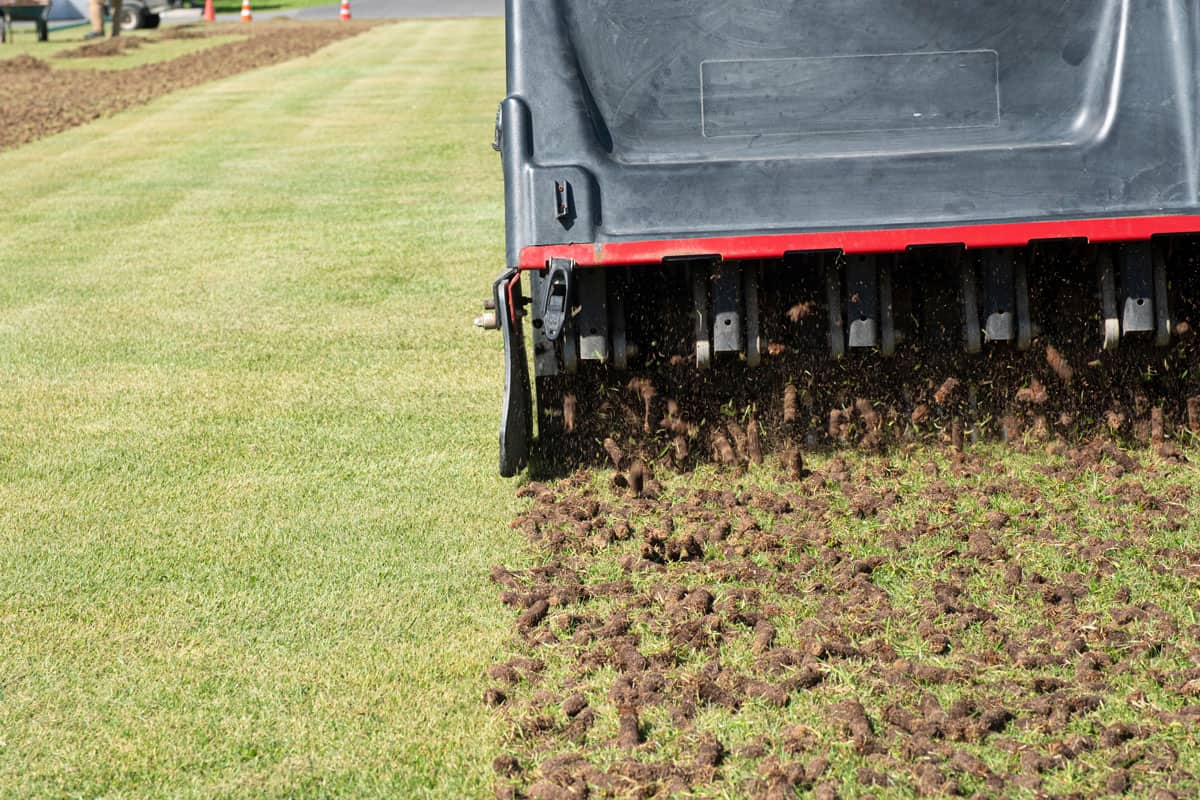
Aerating can revive your lawn, so it's important to know when it's time to do it. You can mostly observe the changes from the get-go, especially when the seasons are changing and the weather patterns are affecting the grass.
Here are telltale signs it's time to aerate your lawn.
The Soil is Hard
You will know the soil has become too compact and hard if you see cracking over the bald spots of your lawn. This means that soil particles are too close together that air, water, and nutrients can no longer penetrate them, resulting in patchy and dry grass.
The Lawn Was Affected by the Construction
If you're moving into a home that has been recently constructed, it means there has been a lot of traffic around the house.
If there had been too much traffic because of workers walking over the lawn and materials being hauled on top of it, the topsoil would have been stripped, and the subsoil would have been hardened.
The Soil is Dry
Dehydrated soil will have excessive thatch, so it likely will not receive the necessary nutrients and water to spruce it up again. If you notice dead grasses on your lawn, it's a sign that the soil itself may not be in good condition and needs to be aerated.
The Lawn has Brown Patches.
This one is self-explanatory: if you notice that your grasses are dying, it means they're not receiving enough nutrients.
However, don't be confused when it happens when you've been watering your lawn: it simply means the water is not absorbed by the soil, resulting in grasses fading off.
There Are Water Puddles
If you notice water puddles forming when you're watering your lawn, it means the soil has become too compacted and hardened that it can no longer absorb water. When the soil does not absorb water, the grasses will slowly die.
Aerating is the best solution if the soil has become hardened.
The Lawn is Faded
A fading lawn is sometimes not easily spotted because it happens slowly, and the changes can be very subtle.
It's important to observe your lawn from time to time to see if there are small spots that are fading so you can prevent them from occurring in other spots.
The Lawn Experiences Heavy Traffic
This is more of a preventative measure. If you see that your lawn is experiencing a lot of traffic, it may be good to aerate it as soon as the activities are over so the grasses can receive the required nutrients to continue thriving.
Tilling vs. Aerating -- What's the Difference?
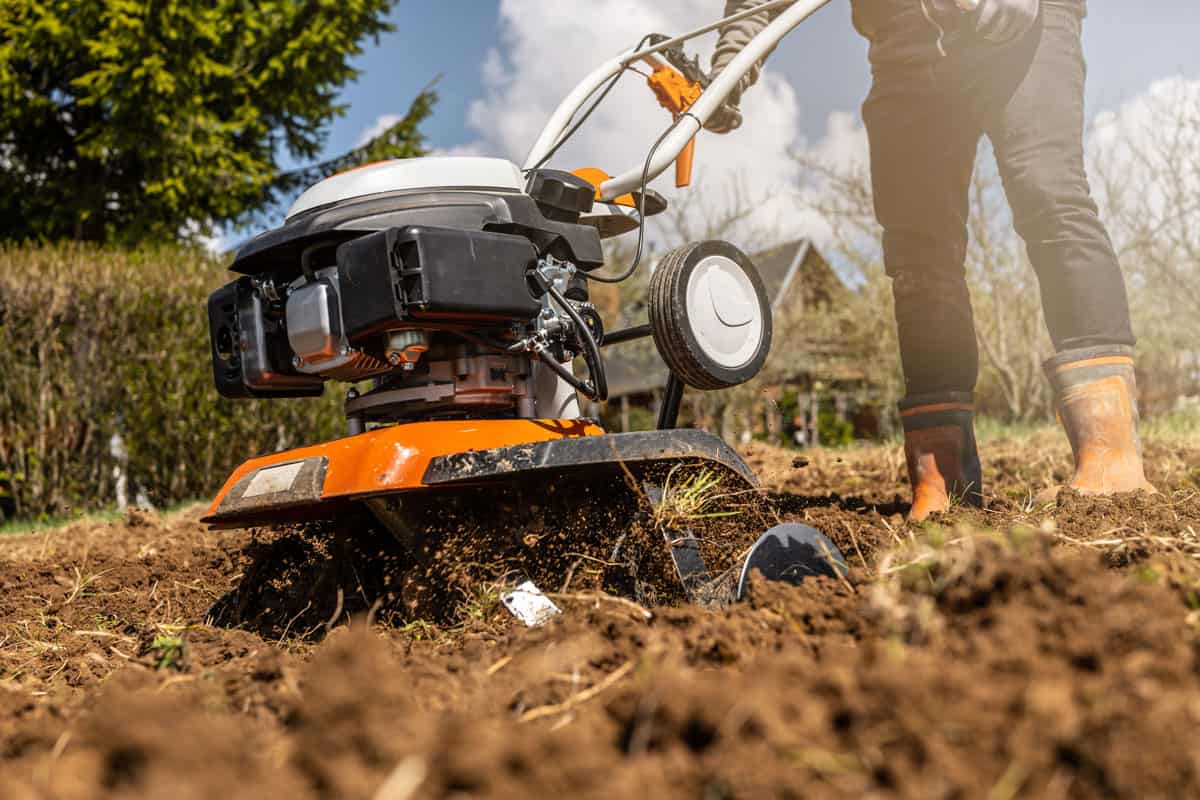
Tilling is vastly different from Aerating. For instance, Tilling is about preparing the soil to be able to plant new seeds. It involves stripping the lawn of old grass and weeds and using it as compost instead.
Meanwhile, Aerating is a simpler practice as it involves only digging holes into your lawn so your existing plants and grasses can absorb all the nutrients they need so they can continue to grow.
When Should You Mow After Aerating The Soil?
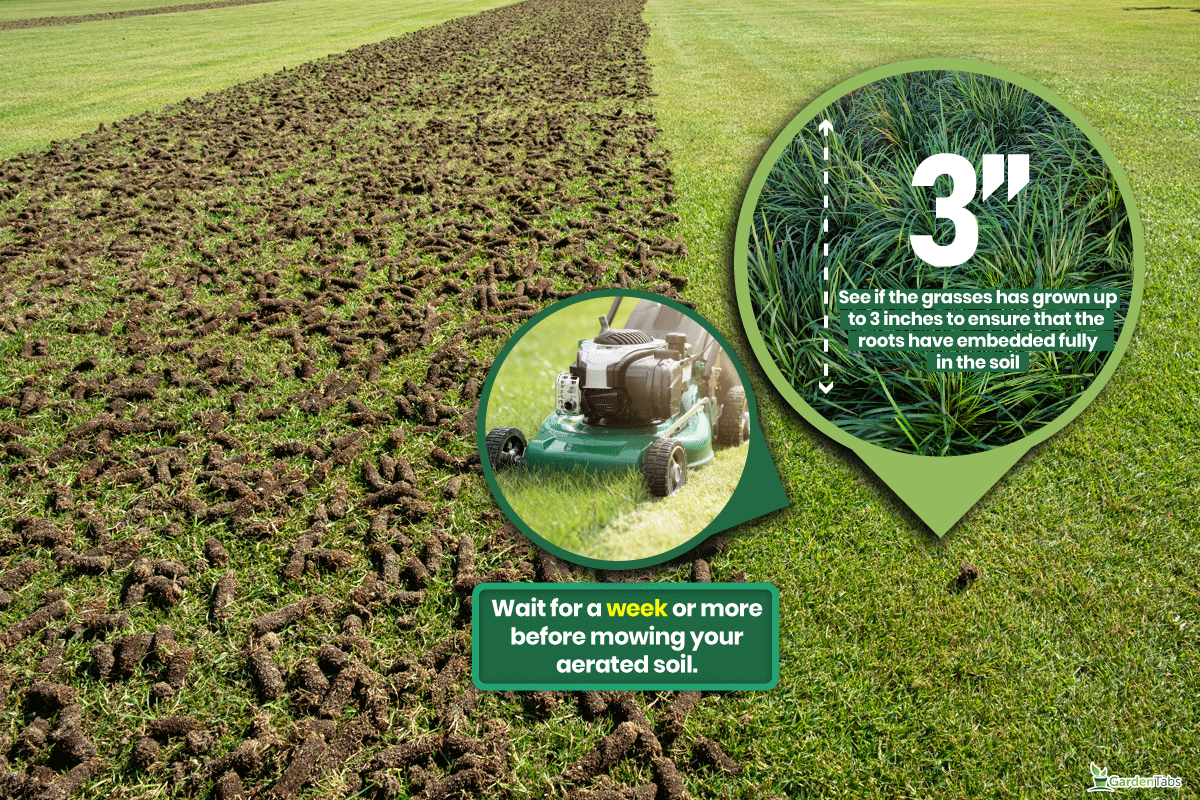
You should wait a week or more before mowing your aerated soil. See if the grasses have grown up to 3 inches before running a mower over it to ensure that the roots have embedded themselves fully into the soil.
Should You Reseed After Aerating?
If you are planning to reseed the bald spots in your garden, you can do so after aerating. That way, the seeds can penetrate the soil and receive the proper nutrients it needs to germinate.
Make sure to apply fertilizer after reseeding. You can do all these after 48 hours.
Final Thoughts
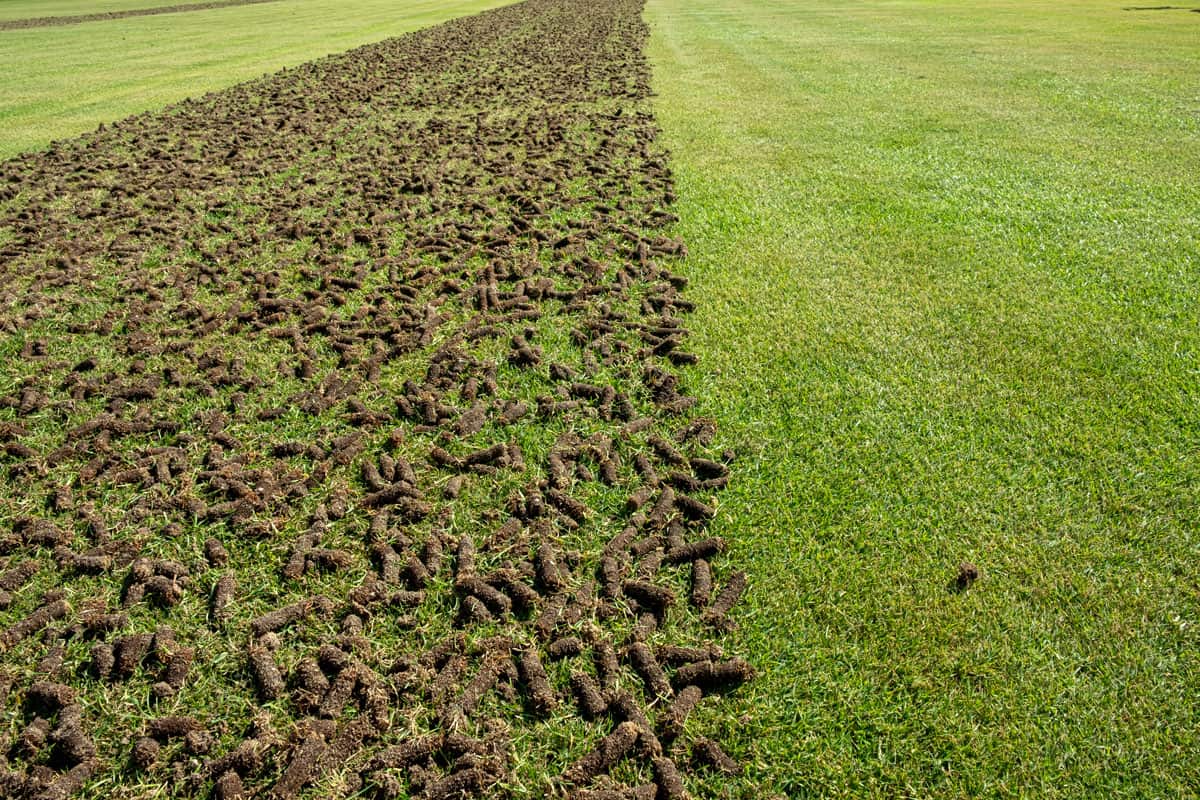
Aerating is very important as it prevents soil thatches from forming in the soil. It keeps your lawn attractive and creates a landscape where you can fully relax.
Using different tools for different purposes is fine, but you can save a lot of time and money if you figure out that a tool can be used for two purposes.
Just make sure that the tool is enough for the amount of space you'll be covering and if it will aerate your compact soil adequately. As always, maintenance is key to making your lawn lush and green.
If you enjoyed this article, check out our other posts:
Can You Aerate Your Lawn In The Spring? Should You?


